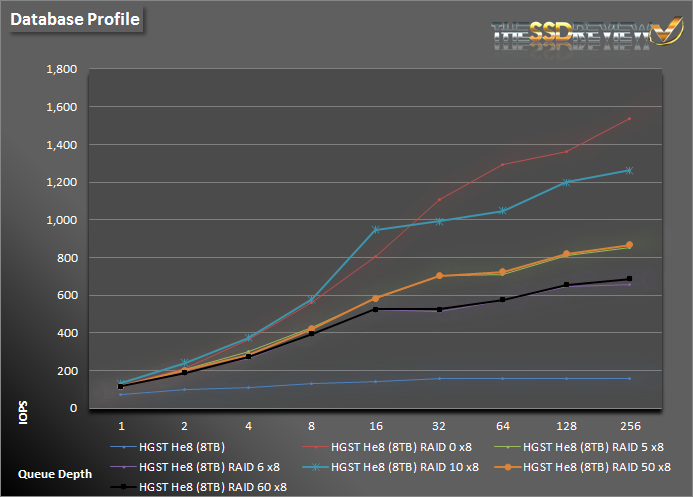SERVER PROFILES
While synthetic workloads do a great job of testing the underlying technology and reporting easy to understand results, they aren’t always indicative of how the drive will be used by the end user. Workloads that simulate enterprise environments try to bridge that gap without being overly complex.
The database profile is 8K transfers, and 67% percent of operations are reads.
The Email Server profile is similar to the database profile, only it 8K transfers at 50% reads and 50% writes.
The fileserver profile is based on an 80% read/20% write mix. It’s made up of block sizes from 512 to 64K, each making up a different percentage of the access pattern. The pattern is: 512 bytes=10%, 1k=5%, 2k=5%, 4k=60%, 8k=2%, 16k=4%, 32k=4%, 64k=10%.
The webserver profile is similar to the fileserver profile, but has some additional 128K and 512K accesses thrown in for good measure. Additionally, the profile is 100% reads.
Finally, taking a look at our now industry standard workloads we can see how well it performs here. As a single drive performance peaks at around 160 IOPS. RAID 0 and 10 battle it out for best performance with RAID 10 delivering higher IOPS in three of the four workloads. Database, email server and file server performance shows similar to what we have seen already in our random and sequential tests. During the web server workload we can see that RAID 10 performance excels overall delivering 1,450 IOPS at QD 256. Impressive performance overall.
 The SSD Review The Worlds Dedicated SSD Education and Review Resource |
The SSD Review The Worlds Dedicated SSD Education and Review Resource | 

